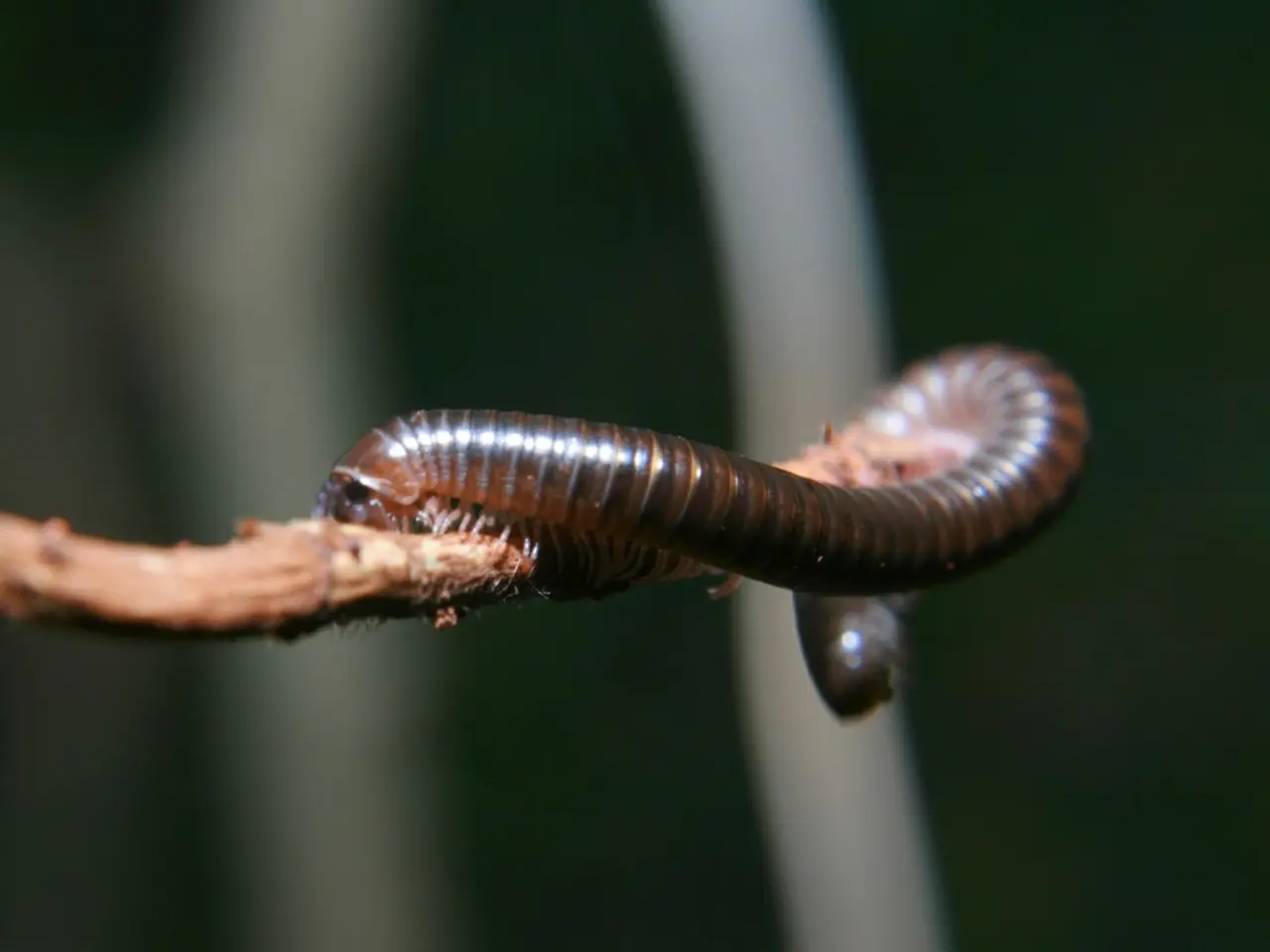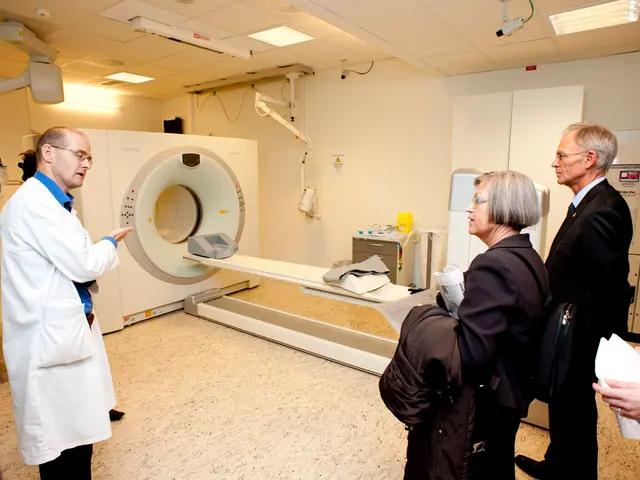Strange Behavior Exhibited by Tumors on Five Occasions
In a groundbreaking discovery, scientists have documented a rare case of a parasitic worm, Hymenolepis nana, developing cancer within itself and effectively transmitting that cancer to its human host [1]. This is the first known case of its kind.
The man, whose condition worsened over time, was found to have a tumor with DNA that matched that of the parasitic worm with a 99% sequence identity [1]. Further investigation revealed that the genetic components of both tumors suggested an accidental transplantation of the sarcoma from the patient to the surgeon [1].
Beyond this extraordinary case, there are several other tumors exhibiting unusual characteristics that set them apart from more common forms of cancer.
One such tumor is the Spindle cell carcinoma of the tongue, a rare variant of squamous cell carcinoma that appears mesenchymal but is actually epithelial in origin [2]. It is extremely uncommon in the oral cavity, making up less than 1% of oral tumors, and has a confusing histogenesis with multiple terms used to describe it [2].
Another example is the Cutaneous tumor with biphasic components, a rare skin tumor showing both glandular and cartilaginous parts [3]. Although generally benign, it can be mistaken for malignant lesions, posing diagnostic challenges [3].
The Thyroid angiosarcoma is a malignant tumor arising from endothelial cells, making it rare and unusual [4]. Cystic prostatic carcinoma, an aggressive and rare variant of prostate cancer, is characterized by cystic degeneration within the tumor mass, which is atypical as most prostate cancers are solid lesions [5].
Tetratomas, a type of tumor found in very rare cases, have been found to contain teeth, hair, muscle, and bone tissues [6]. These tumors can be cancerous but are mostly benign [6]. Intriguingly, a 16-year-old girl in Japan was found to have a tetratoma with neural tissue resembling part of the brain in her ovary [7].
In a more unusual finding, a woman in her early 40s heard voices that led her to a hospital, where a brain tumor was discovered and removed [8]. The exact cause of this phenomenon remains unclear.
The "headspin hole," a fibrous mass on the scalp caused by repetitive headspins, often seen in breakdancers, serves as another reminder of the strange and unpredictable nature of biology [9].
It is important to note that these tumors grow rapidly but benign ones do not spread to other parts of the body [10]. The report does not suggest a new health risk that people should be worried about.
In a case from 1996, a surgeon unknowingly received a malignant fibrous histiocytoma (a type of sarcoma) from a patient during surgery [11]. This incident underscores the importance of awareness, as it could help doctors look out for this possibility in similar cases.
The discovery of the parasitic worm transmitting cancer to its host and the existence of these unusual tumors highlight the fascinating and sometimes bizarre aspects of biology. As advancements in AI and deep learning continue, early identification and diagnosis of these rare conditions may become more feasible, leading to improved treatment options.
References:
- The Lancet Infectious Diseases
- Journal of Oral Pathology & Medicine
- American Journal of Dermatopathology
- American Journal of Surgical Pathology
- European Urology Oncology
- Cancer Research
- Journal of Clinical Oncology
- Journal of Neurology, Neurosurgery, and Psychiatry
- Journal of Neurosurgery
- Cancer Research
- The Lancet
- The instance of a parasitic worm, Hymenolepis nana, developing cancer and transmitting it to its host represents a significant advancement in our understanding of medical-conditions and public health, pertaining to science and research.
- The Spindle cell carcinoma of the tongue, an unusual tumor, presents challenges in diagnosis due to its origins and rarity within the oral cavity, emphasizing the complexity of biology and health-and-wellness.
- A Cutaneous tumor with biphasic components, though generally benign, poses diagnostic difficulties due to its glandular and cartilaginous components, serving as an example of the intricacies of medical-conditions and research in the field of dermatopathology.
- Tetratomas, rare tumors containing teeth, hair, muscle, and bone tissues, can be cancerous but are mostly benign, yet intriguing cases like the one found in a 16-year-old girl in Japan with neural tissue resembling brain tissue in her ovary further illustrate the bizarre aspects of biology and its impact on health.
- Unusual brain tumors, like the one that led a woman in her early 40s to hear voices and seek medical attention, continue to pose questions about their causes and treatment, underlining the importance of ongoing research and the possibilities offered by AI and deep learning for early detection and improved treatment options in neurological disorders and mental health.



